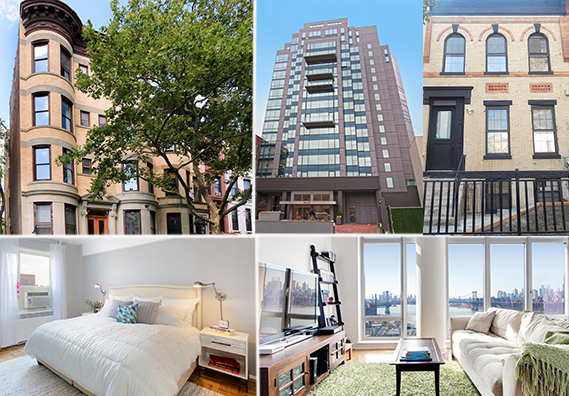The scarcity of inventory continues to drive up prices in Brooklyn — and don’t expect it to stop anytime soon.
The borough saw the second highest average sales prices on record in the fourth quarter of 2015, at $808,121, down from $856,839 in the previous quarter, according to Douglas Elliman’s latest quarterly sales report. Meanwhile, inventory dropped 6.5 percent year-over-year.
“Inventory crunch is still such a predominant factor,” said Sarah Burke, senior manager of Brooklyn sales at Elliman. “By 2017, there’s going to be a little more inventory to accommodate the demand.”
The median sales price rose 11.1 percent year-over-year to $650,000.
“What’s fueling this is a robust economy, job growth and Brooklyn’s own success in rebranding itself over the last five years as a destination, not just a less expensive alternative to Manhattan,” said Jonathan Miller, president of Miller Samuel and author of the Elliman report. “What we’ve been seeing in 2015 is a tremendous amount of sale activity.”
Frank Percesepe, regional senior vice president in Brooklyn for the Corcoran Group, which also released its fourth quarter report Thursday, said the continued high demand for residential properties in the borough is driving residents to south Brooklyn to find deals.
“A long time ago, Brooklyn became a destination,” he said. “And now that’s a destination, there’s a shortage, and people are going deeper into the borough.”
Queens is experiencing a similar inventory crunch, though not as pronounced. Miller said that while Brooklyn’s housing stock is “critically low,” Queens is merely “low.” The average number of days that a property was on the market fell 41.6 percent year-over-year to 57. The median sales price hit $470,000, a 9.2 percent year-over-year increase. Listing inventory fell 6.3 percent from the same time last year.
Rental headwinds
On the rental side, there are some market headwinds. In Manhattan, the vacancy rate hit 2.74 percent, slightly lower than last month’s nine-year record high but still a troubling sign of “potential future weakness,” Miller said. Though a median rental price of $3,350 continued the year-over-year increases that have been seen for the past 22 months, these rent increases are primarily confined to the lower end of the market, according to Elliman.
“What we’re seeing is a more polarized market,” Miller said. “You’re seeing higher rent growth in the lower-priced apartments, and luxury has been flat or seeing slippage for the good part of 2015. Part of that is because luxury is what’s being built in Manhattan. If there is a rental built in Manhattan, it is going to be luxury.”
Brooklyn is experiencing similar issues but hasn’t seen an increase in median rent year-over-year for two consecutive months. Both Manhattan and Brooklyn saw a boost in concessions. In Manhattan, 13.1 percent of rentals had landlords who paid broker fees and offered up concessions, while in Brooklyn, 6.5 percent of new rentals came with concessions and paid-for broker fees.
Queens saw a drop in median rents due to a decrease in the number of new developments. The median rental price for the fourth quarter of 2015 was $2,551, down 10.1 percent year-over year.
